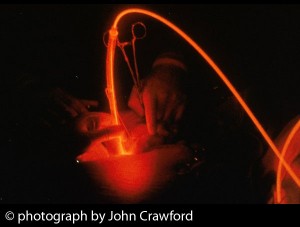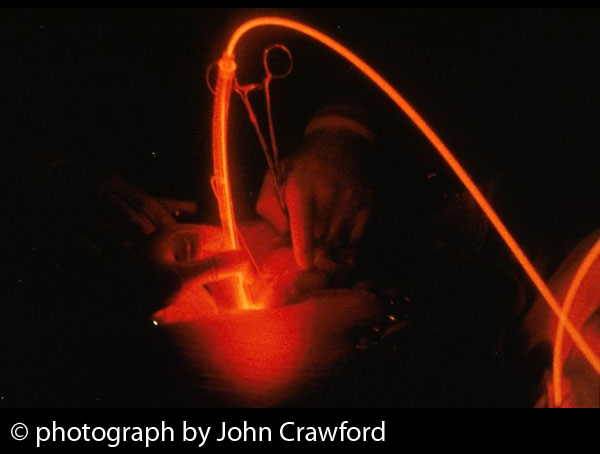Bile Duct Tumors: New Treatment Insights
Cholangiocarcinoma is a very mysterious, hard-to-treat cancer of the bile ducts. Survival rates for patients diagnosed with these tumors have improved very little over the past few decades. Bile duct tumors are fairly rare in Europe and North America, though the incidence of a certain type (found in the bile ducts within the liver) has been increasing in recent years. Most bile duct tumors, however, are found outside the liver.
Unfortunately, bile duct tumors are usually discovered at a very late stage, when the individual shows unexplained weight loss and painless jaundice (yellowing of the skin). This helps explain why the cancer is so difficult to diagnose and treat. Most tumors are unsuitable for surgery at the time of diagnosis, and the prognosis is often extremely poor. About half of untreated patients with bile duct tumors will die within three months.
To make matters worse, many patients with inoperable tumors are not physically strong enough to undergo aggressive chemotherapy or radiation therapy, and bile duct tumors tend to be resistant to these therapies. Only a select few can withstand the aggressive chemotherapy and radiotherapy treatments. About seven out of ten of these more “fit” patients may survive for five years. Although treatment with this chemo-radiation approach has been touted as the standard of care for all bile duct tumors, there is no evidence indicating a survival advantage of adjuvant radiotherapy and chemotherapy after surgery.
On the other hand, for patients with inoperable bile duct tumors, the placement of a metallic stent (allowing the bile to continue to flow) improves the quality of life, albeit without a significant survival benefit. The key seems to be the addition of a laser-based approach known as photodynamic therapy, or PDT. Unlike surgery, radiation and chemotherapy, PDT is non-invasive and minimally toxic, resulting in a far fewer complications and a superior quality of life.
With a combined PDT-stenting approach, the survival benefits are at least similar to chemo-radiation following surgery. Again, the difference is a much better quality of life for PDT-treated patients. Whether or not surgery is an option for people with these tumors—and for most patients surgery is not an option—PDT merits serious attention as an integral part of the overall approach.
Combination Treatments: The Power of Synergy
Recently, PDT has been shown to enhance survival in patients with inoperable bile duct tumors. Although PDT therapy has been shown to boost survival, its effects could be further enhanced by chemotherapy A recent study found that Gemzar-based chemotherapy had a promising impact on survival for patients with advanced cholangiocarcinoma.
For this reason, researchers at Konkuk University School of Medicine in Seoul, Korea, sought to determine whether the combination of PDT with chemotherapy is more effective than PDT alone. A total of 74 patients with bile duct tumors were treated: 16 patients received PDT and chemotherapy (group A), while the remaining 58 were treated with PDT alone (group B).
The combined chemo-PDT approach resulted in a definite survival advantage. The median survival was 538 days in group A and 334 days in group B. Moreover, PDT with chemotherapy, and undergoing at least two sessions of PDT, were both independent predictors of longer survival in patients with advanced bile duct tumors. PDT with chemotherapy results in longer survival than PDT alone, as reported in the May 2014 issue of Gut and Liver.
Another treatment strategy for advanced bile duct tumors is to use a radiation treatment called radiofrequency ablation (RFA). A recent study at the University of Virginia (USA) involved reviewing records of patients who had been treated with either RFA or PDT.
The researchers found no significant difference in survival between the two groups. Though patients receiving RFA had a lower mean number of plastic stents, they also experienced more episodes of stent blockage and inflammation of the bile ducts, as reported in the 15 May 2014 issue of Gastrointestinal Endoscopy.
More studies are needed to assess the therapeutic potential of combinations of PDT with conventional treatments. A synergy between PDT and either chemotherapy or radiotherapy could lead to a lowering in the treatment dose for those conventional treatments, thus reducing their overall toxicity and improving the patient’s quality of life.
Support us by buying our book, The Medicine of Light, and ebooks from our Photoimmune Discoveries eBook Series.
Sources
Hong MJ, Cheon YK, Lee EJ, Lee TY, Shim CS. Long-term outcome of photodynamic therapy with systemic chemotherapy compared to photodynamic therapy alone in patients with advanced hilar cholangiocarcinoma. Gut Liver. 2014 May;8(3):318-23.
Strand DS, Cosgrove ND, Patrie JT, Cox DG, Bauer TW, Adams RB, Mann JA, Sauer BG, Shami VM, Wang AY. ERCP-directed radiofrequency ablation and photodynamic therapy are associated with comparable survival in the treatment of unresectable cholangiocarcinoma. Gastrointest Endosc. 2014 May 15. [Epub ahead of print]
© Copyright 2014, Photoimmune Discoveries, BV





 English
English Français
Français Deutsch
Deutsch Nederlands
Nederlands